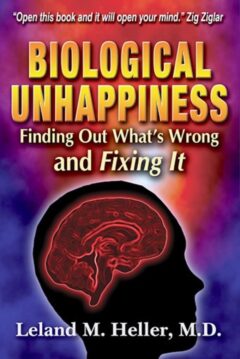Going Back to Work?
QUESTION:
Dear Dr. Heller,
My 26 year old daughter is said to have a dual diagnosis of borderline personality disorder and Unipolar depression. She seems to have SAD and uses a light box daily. She is a published, free lance magazine writer and outwardly seems very professional, competent and is considered by most to be quite attractive. She doesn’t seem to be able to handle pressure and has often been close to non functioning when in a depressive state. She claims to contemplate and once tried to commit suicide. She has poor financial coping skills. We have always “bailed her out” to avoid putting too much pressure on her. There is an ongoing fear of suicide when things get too tough to handle. She has been a participant in the in-hospital, “Catalyst” program at Evanston Hospital in Evanston, IL. We had hoped (and all agreed with therapist) that she would find part time employment to supplement her editorial income but so far no job has been “right.” She was forced to move home when we would not renew her apartment lease. We felt that this would be an incentive for her to gain some financial independence taking some responsibility for her existence, but this so far has not happened. She is currently taking lithium and Serzone under the care a psycho-pharmacologist and sees a therapist reputed to be qualified in treating depression twice a week. We need some help in setting some goals in determining how her future should be structured. Could you recommend any sources of help. Can you suggest any individuals or programs which can help us and to the extent possible, help her?
ANSWER:
While I understand why she was given lithium and Serzone, in my experience its highly unlikely that shell do well enough to go back to work. Assuming the BPD diagnosis is correct, the following target symptoms are likely to still persist: inappropriate moodiness, emptiness, boredom, chronic anger, rejection sensitivity, and chronic dysphoria (anxiety, rage, depression and despair). Lithium does help slightly with the excessive over-reaction with the mood swings, and Serzone sometimes helps with depression and anxiety. Its main use is for sleep. Many physicians like to prescribe Serzone for borderlines, such as Dr. Paul Markovitz. Its possible some people do well on it, and they dont come to see me. Ive seen dozens of individuals on the lithium/Serzone combination and none of them were doing well. Lithium tends to make the individual fat over time as well, which is brutal for the self esteem. Theres a lot of information on this site about what I do and why, and both of my books “Biological Unhappiness” and “Life at the Border” go into it at length. The explanation for my medications and their use is available at “How I Treat the BPD and Why?” – available in the BPD section.
Regarding going back to work, it absolutely needs to be a goal. Its always one of my goals for my patients. I wish I could recommend any specific programs, but I dont know enough of any first hand to give my recommendation. Unfortunately most programs have too low an expectation level for borderlines, and generally dont make all their diagnoses.
The screening test I use for my patients may be of enormous use for you, since depression and BPD rarely exist without other diagnoses as well, and they must all be treated. Its a key part of BPD treatment. Once the individual is feeling great – and hopeful – I have found the Ziglar tape series the best way to work on goals, and his third set of tapes are about goals. When an individual is dysphoric and has low energy, its hard to pursue goals.

